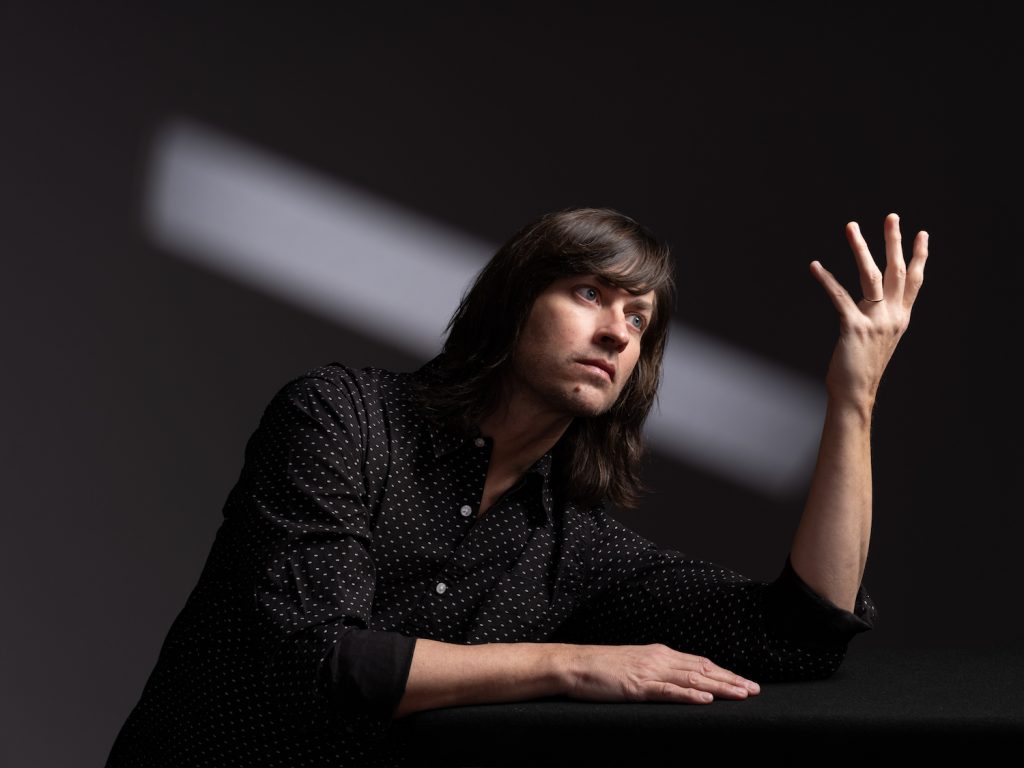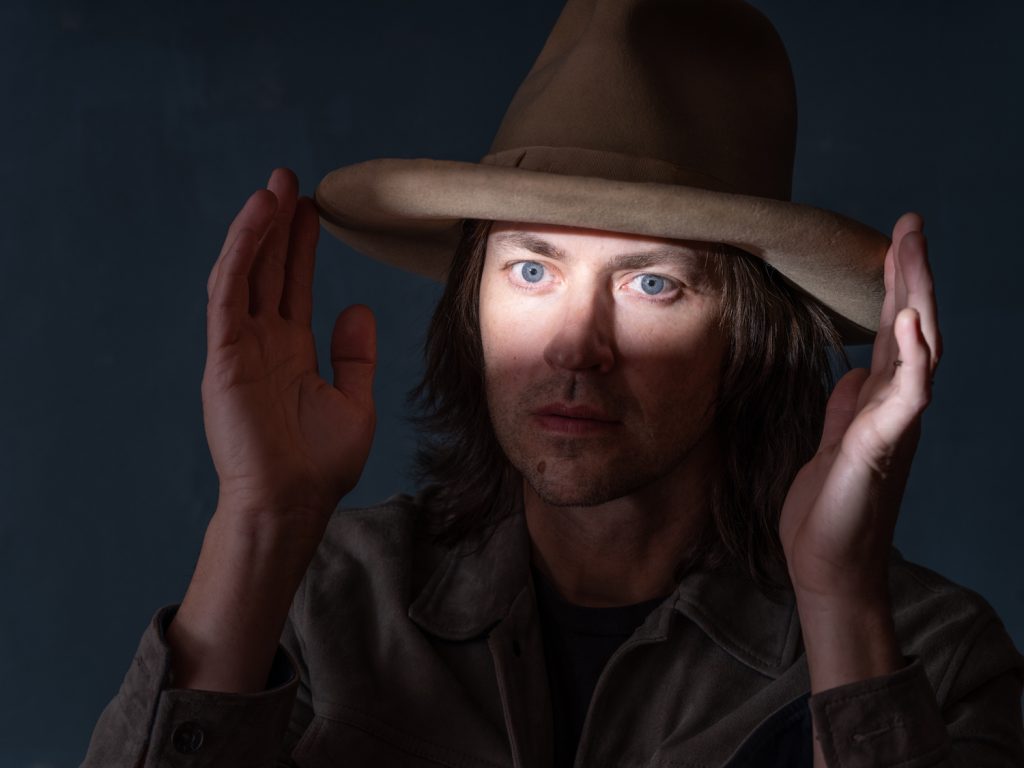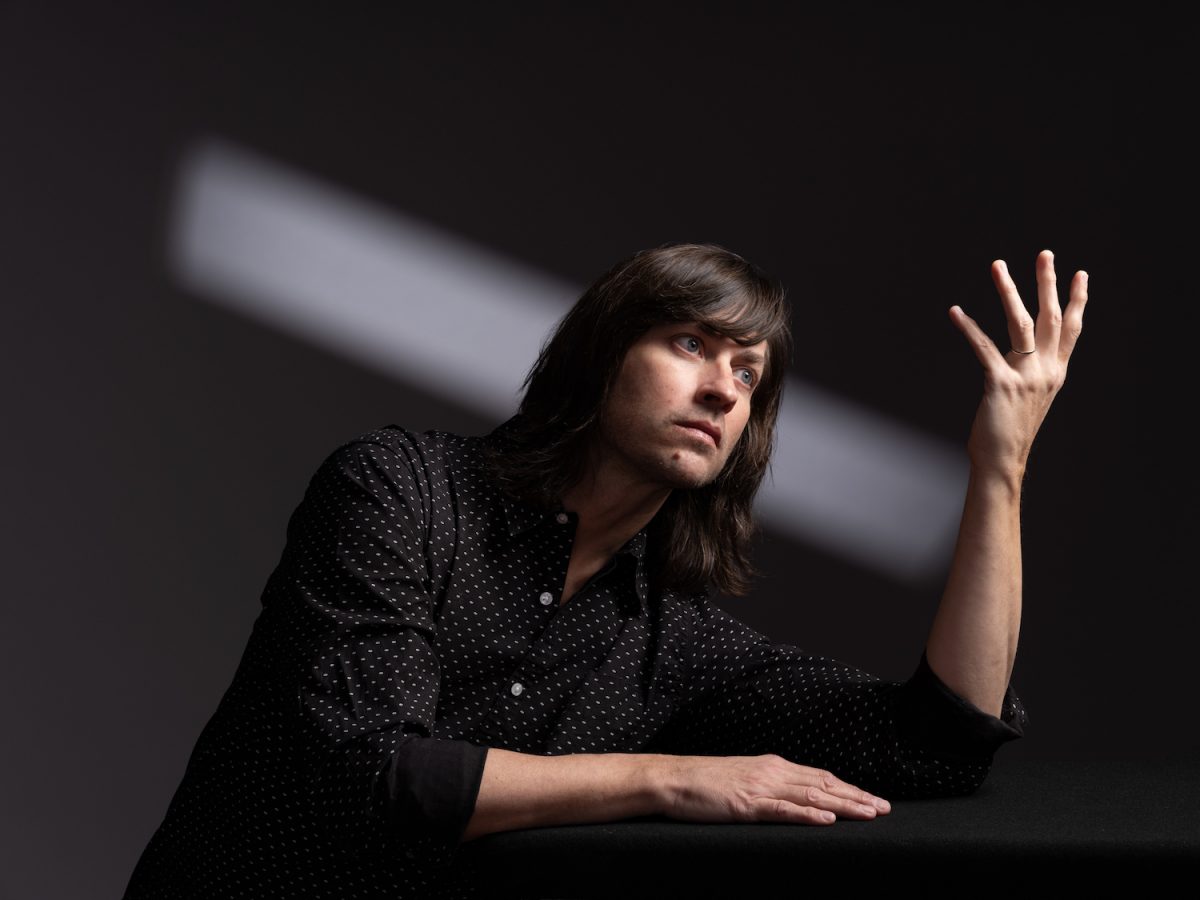
There have been other times when Rhett Miller has handed himself over fairly completely to the whims of a producer—most notably 2002’s The Instigator (Jon Brion) and 2006’s The Believer (George Drakoulias). But The Misfit (ATO) is different. By Miller’s estimation, his eighth solo album is his most collaborative ever, thanks to the easy creative dynamic between him and producer Sam Cohen (Kevin Morby, Karen O/Danger Mouse). Aside from cowriting credits, Cohen played everything on the album. The Old 97’s frontman didn’t so much as strum an acoustic guitar, leaving him to focus on his singing, which is more nuanced on The Misfit.
The fear of stagnation has a way of coaxing middle-aged artists out of their comfort zones, which may be why The Misfit sounds less like Rhett Miller than anything he’s done. But that shouldn’t scare off fans. There’s still plenty of Miller in The Misfit.
MAGNET recently caught up with Miller at his home in New York’s Hudson Valley, before he hit the road with the Old 97’s for their current tour.
The Misfit is a true collaborative effort between you and Sam Cohen. Did you ever think of calling it something other than a Rhett Miller solo album?
I thought about “Rhett Miller & Sam Cohen.” When we were going into it, we talked a lot about the Bowie/Eno collaborations as a reference. But it still feels like a Rhett Miller solo album. The closest analog for me was working with Jon Brion on The Instigator. They both see the architecture of the music; they’re both fucking incredible.
How were the two producers different?
Jon tended to give me an assignment, walk away and come back later to see how I’d done. Or he’d take over completely and come up with some incredible arrangement or performance. Sam would play something, look at me and raise his eyebrows. I’d say, “Yes, that’s perfect.” Or, “What if it was more like … ” The collaboration was second by second. With Jon, it was more day by day. It was really a mind-melding experience with me and Sam.
Start to finish, what was the time window for this record versus The Instigator—which, I might add, is 20 years old this month.
Obviously, the industry was in a very different place back then. Jon and I had four months in the studio with that album. We got to bring in the greatest drummers: Josh Freese and Jim Keltner. We got to bring in David Garza and Robyn Hitchcock. It was super-experimental, fun and lazy. We had whole days when maybe we’d get one guitar solo.
With Sam, each day we’d chose what song we wanted to work on, strip it down to its component parts and rebuild it until it was a complete set of music and lyrics. By the end of the day, we’d have a rough mix. It was the opposite experience, in terms of compression versus wide-open spaces.

The Misfit feels experimental without being gratuitous.
Well, thanks. We stretched the furthest on “Fascination” and “Twelve Thirty Four,” both of which feature a Korg that’s the exact keyboard my brother bought when we were 12 or 13 years old. For me, it was so tied to my youth, so I had to really make peace with it. Those were some of the worst years of my life. That said, there are songs on this album where it feels really comfortable and right in my wheelhouse musically—like “Already There” and “Go Through You.”
What about your vocal approach?
I didn’t really find my true singing voice until after the Old 97’s were off Elektra. On our albums for New West, I finally felt like I was singing without the self-consciousness of the young version of me. Since then, it just feels like me. But I do have this thing where I’m always ahead of the beat. I tend to sound like I’m trying too hard to sell an emotion. It keeps me from having the laid-back quality I envy in other people. Sam challenged me to lay back and sing more softly. For “Let Me Go There With You,” he basically had me whisper the vocal. I laid down in the vocal booth and pretended there was someone’s ear right next to my mouth.
Congratulations on seven years of sobriety.
Yeah. Well, it’d been so much for so long, and I just decided it wasn’t working for me anymore. I did do a little AA stuff, but then I ended up charting my own course and never really looked back. My marriage was suffering, and I wanted to be happy with the way my kids’ childhoods played out—because, man, it’s a finite amount of time.
Has it been harder to abstain on the road?
At the beginning it was tough, because people did things like pile up shots at the microphone stand—and I had to sing about it constantly. But I feel pretty lucky that it wasn’t as hard for me as it is for some people. I really wanted to shut it down.
Tell us about The Misfit’s cover art.
For the last two or three years, I’ve been doing a podcast series call Wheels Off, where I talk to creative people about their creative process. I was lucky enough to interview painter Ashley Longshore. She’s one of the most successful artists working today—the Andy Warhol of our time. At the same time, she incredibly down to earth and accessible. She told me she was a big fan and seemed sincere, so I reached out to her to see if she’d ever consider doing an album cover. She was totally into it, and I knew it was going to be whatever she thought it should be. There was no budget, so for her to slum it with me on an album cover was amazing. If people buy my album, they can own an Ashley Longshore print. And how cool is that?
—Hobart Rowland






